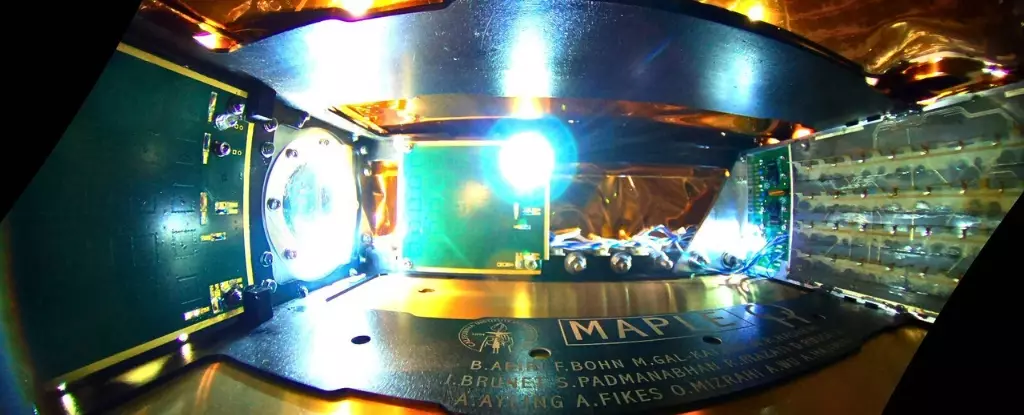Solar power is the third largest source of renewable energy and is expected to grow exponentially in the coming decades, with renewables accounting for 90 percent of the energy market by mid-century. However, technical challenges need to be overcome for this transition to occur, with intermittency being the main limiting factor for solar power. To address this, researchers with the Space Solar Power Project (SSPP) at Caltech recently completed the first successful wireless power transfer using the Microwave Array for Power-transfer Low-orbit Experiment (MAPLE), which could pave the way for space-based solar power (SBSP).
The Space Solar Power Project
The Space Solar Power Project began in 2011 when Donald Bren, a lifetime member of the Caltech Board of Trustees, approached Caltech’s then-president Jean-Lou Chameau to discuss the creation of an SBSP research project. Bren and his wife agreed to donate a total of $100 million to fund the project, while the Northrop Grumman Corporation provided an additional $12.5 million. The project aims to create solar power energy transfer systems that are ultra-lightweight, cheap, and flexible.
The MAPLE Experiment
MAPLE was developed by a Caltech team led by Ali Hajimiri, the Bren Professor of Electrical Engineering and Medical Engineering and the co-director of the SSPP. MAPLE is one of three key technologies tested by the Space Solar Power Demonstrator (SSPD-1). This platform consists of an array of flexible, lightweight microwave transmitters controlled by custom electronic chips. The demonstrator was built using low-cost silicon technologies designed to harvest solar energy and beam it to desired receiving stations worldwide.
Each SSPP unit weighs around 50 kilograms (110 lbs), comparable with microsatellites that typically weigh between 10 and 100 kg (22 to 220 lbs). The SPPD-1 components are unsealed, meaning they are exposed to the extreme temperature variations of space. Beyond demonstrating that power transmitters can survive being launched into space, the experiment has provided useful feedback to SSPP engineers.
The MAPLE experiment successfully demonstrated wireless power transfer in space using lightweight structures. This is an important step towards space solar power and broad access to it globally. The technology would allow satellites in orbit to collect power 24 hours a day, 365 days a year, without interruption.
The Potential of SBSP
SBSP has the potential to yield eight times more power than solar panels located on Earth’s surface. When the project is fully realized, Caltech hopes to deploy a constellation of modular spacecraft that will collect solar power, transform it into electricity, and convert it to microwaves that can be transmitted wirelessly over anywhere in the world. The technology not only assists the transition towards clean, renewable energy but also has the potential to expand access for underserved communities.
The successful wireless power transfer using MAPLE is a significant step towards achieving space-based solar power. While there are still technical challenges to overcome, the technology has the potential to revolutionize the renewable energy market and democratize access to energy globally.


Leave a Reply